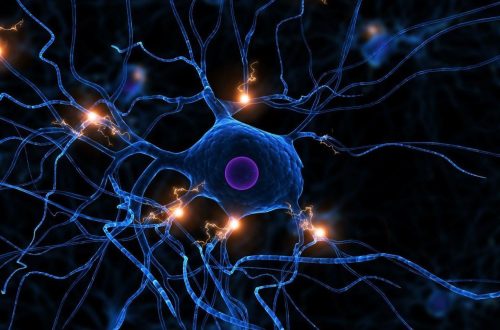Axonopathy is a main pathogenic driver or contributor to neurodegenerative disease manifestation. Both dendritic arbors and long axon processes should be maintained, as neurons have specialized anatomy.
The neuron disconnects from its postsynaptic partners with the loss of the axon which ultimately eliminates the functionality of neural circuitry. The loss of the axon is considered an early symptom which can further lead to extensive degeneration and neuron loss.
Peripheral motor and sensory neurons are linked with axonopathy, depending on the neuronal sizes. These systems are largely affected and their sensitivity to challenges, for instance, chemotherapy drugs and metabolic disorders like diabetes.
Different mechanisms lead to axon degeneration and they encompass a wide variety of biological processes like transport, cytoskeleton, translation, metabolism, and inflammation. These processes can show how to preserve an axon and also show why axonopathy is a harbinger of degeneration.
Axonopathy Types
The most common type mostly discussed clinically is Distal axonopathy. In this type axon and myelin sheath degenerate first from the distal parts of the axon. If it is left untreated, then the axon dies due to this abnormality. This leads to characteristic sensory loss and weakness often termed as “stocking-glove.”
There is an accumulation of neurofilaments and organelles in the degenerating axon. Stagnation of axoplasmic flow can be the reason behind this. In the end, the axon is atrophic and breaks down completely. Severe cases of axonopathy have a close resemblance to Wallerian degeneration.
Myelinated axons are lost at the advanced stage. Most clinical neuropathies are caused by pesticides, drugs, organic phosphates, and industrial solvents that are characterized by distal axonopathy. The main cause of distal axonopathy is the failure of the neuronal body to keep up with the metabolic demands of the axon.
As the distal part of the nerves and large axons have the highest metabolic and nutritional demands, this can be a reason why this disease affects distal areas the most.
Axonopathy Symptoms
According to clinical research, the symptoms of axonopathy are not too hard to spot. It is best if the condition is diagnosed earlier, this can lead to minimal nerve damage as the primary cause is curtailed. It is essential to recognize the symptoms. We have listed down some warning signs!
- Paresthesia
The sensation of needles and pins is a leading sign of disturbed nerves. If it is long-lasting in the peripheral area that might be a sign of distal axonopathy.
- Ataxia & Dystaxia
The coordination of muscle movements is impaired in ataxia. The mild version of ataxia is known as dystaxia, which is an unsteady gait followed by shaky limb movements.
- Hammertoe
Hammertoe is the result of weakened muscles. In this condition, the toe muscles lose strength, which results in the curling of the toe. As if someone was hit with a hammer.
- Muscle atrophy
A decrease in muscle mass is common in axonopathy. The reason is that nerves are responsible for controlling the movements of muscles, so damage to the nerves leads to muscle weakness and wasting.
- Scoliosis
The patient’s spine curves to one side in scoliosis. Environmental factors play a major role in this condition, especially with genetic predispositions.
Axonopathy Causes
Mostly axonopathy is the result of the underlying diseases people develop over time. One of the causes is diabetes. High blood sugar levels damage the nerves which usually starts from peripheral areas. Axonopathy is also a sign that blood sugar levels are not in the normal range.
Another cause of axonopathy is connective tissue disease. Furthermore, kidney disorders can also lead to axonopathy. Chemotherapy drugs can also be a leading cause behind axonopathy.
Sometimes, the cause of axonopathy is inherited health problems One of the disorders is Charcot-Marie- tooth disease(CMT), which manifests itself in clawed toes. At the moment there is no cure for this problem.
Moreover, HNPP is another genetic cause (Hereditary neuropathy with liability to pressure palsy) of axonopathy. The severe symptoms include tingling sensation and pain that can last for months. Although there is no permanent cure, the symptoms can be curbed with proper treatment.
Axonopathy Treatment
The treatment of axonopathy means treating the root cause. For instance, a causative agent like a drug or toxin can be eliminated or dietary deficiency can be improved. These actions may halt the progression of the disease and lessen symptoms, but the recovery is extremely slow. In other words, it may be incomplete.
If the cause is unknown or not treatable, supportive care can be helpful, which includes minimizing the pain and disability. Tricyclic antidepressants like amitriptyline or gabapentin(anti-seizure drugs) can reduce neuropathic pain significantly.
Immune system modifying treatments may include IV immunoglobulin and plasma exchange for acute myelin dysfunction. While on the other hand if the patient is suffering from chronic myelin dysfunction they may be prescribed corticosteroids, antimetabolite drugs, and IV immunoglobulin.
If you spot any symptoms, it is crucial to discuss them with your doctor immediately. Because sometimes the cause of axonopathy can be a serious and life-threatening disease.
Myelinopathy vs Axonopathy
When it comes to the comparison of myelinopathy and axonopathy, there are some similarities and differences. The site lesion in myelinopathy is segmental or random myelin whereas when it comes to axonopathy the degeneration of the distal axon is seen.
Myelinopathy is characterized by the dysfunction of the immune system. On the other hand is due to metabolic, toxic, ischemic, or genetic causes. Both proximal and distal areas are affected in myelinopathy but in axonopathy, only distal areas are severely damaged.
The loss of sensory and reflex actions is common in both. The lab results of myelinopathy show high protein in CSF as compared to axonopathy, which is normal. One of the good things about myelinopathy is that its prognosis is strong and detectable in comparison to axonopathy.
Both conditions require early detection, so it is encouraged to visit the doctor as soon as you feel something is not normal with your body.
 Health & Care Information
Health & Care Information 


